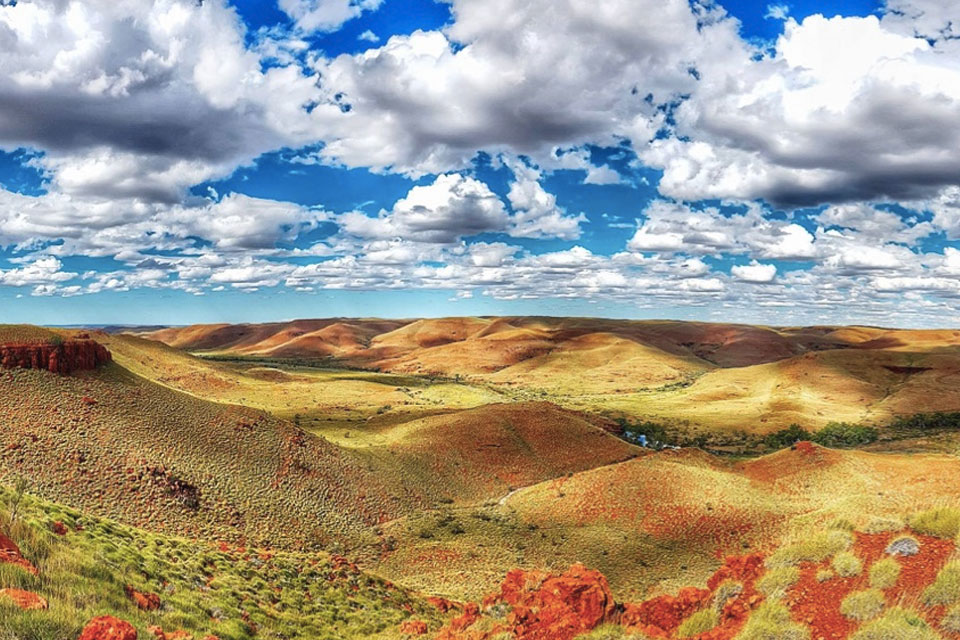
On May Day 1946, eight hundred aboriginal pastoral workers struck in the Pilbara, initiating the longest strike in Australian history up until that point. The demands of the strike were basic and laid bare their horrible conditions. They wanted equal wages with their white counterparts, as the men were either paid a fraction of the award or in food rations while the women were not paid at all, as well as freedom of movement and the right to elect representatives. This was because the WA Aborigines Act made it illegal for aboriginal workers to enter white towns or leave the stations, as well as banning membership to unions.
The slave conditions of aboriginal workers in the Pilbara did not go unnoticed. Don McLeod, militant unionist, member of the Communist Party (CPA) and white fulla was involved with meetings the Marrngu community were having in 1944. In these meetings he was the one to suggest strike action to the Marrngu people who had been discussing their oppression for years. The Marrngu community would spend two years planning the strike. This plan involved two of the main strike leaders and Marrngu activists Clancy McKenna and Dooley Bin Bin going around the stations and giving workers calendars with the 1st of May marked off, so they could synchronise the walk-off.
The strikers were immediately met with state repression. McKenna was arrested only a week into the strike, he was followed by Bin Bin and then McLeod—who would be arrested another six times throughout the strike. In response, there was a large protest in Perth and strike supporters formed the Committee for the Defence of Native Rights (CDNR). The CDNR was made up of Noongars, quakers, trade unionists, other activists, and was led by the CPA. It sought support from other organisations, like the London anti-slavery society, trade unions and even the UN. The funds needed for the three strike leader’s court cases was fundraised by the CDNR, and all three of them were free by August.
The next two years would see raids and evictions on camps the strikers set up in the bush. A strategy of siege warfare would come into play, as the strikers could only get their ration coupons through their slavers the pastoralists. They, and the state, were determined to starve the strikers out. Luckily, the CDNR and CPA had managed to find organisations that were willing to provide funds to the strikers, among them thirty state and national trade unions.
June 1949 saw the police arrest forty-three strikers walking off Warrawagine station and then made to walk kilometres to the nearest town, in chains. This prompted the Seamen’s Union to threaten a black ban on all wool shipments from stations where slave conditions applied if the strikers were not released. Two months later they were, and the mighty common front of the state and pastoralists was defeated, and soon after the strikers were given their demands. Many of the strikers never returned to work, preferring to stay on the camps to form co-ops, planting the seed of land rights. The most decisive factor in the strike was the indomitable Marrngu people, but without the support or initial push by working class organisations they would not have succeeded.
This was not just an instance of spontaneous solidarity, aboriginal people had been involved in the worker’s movements decades prior, like the 1890s shearers’ strikes which saw the participation of hundreds of aboriginal shearers, as well as the 1930s unemployed workers’ movement where Communist organisers went out of their way to include aboriginal workers and forcefully challenged the racism they faced. There are examples of solidarity after Pilbara as well, with the Gurindji strike in the 1960s as well as the green bans in Redfern being a few of them.
There are a few reasons why non-Indigenous workers have been willing to show solidarity to Indigenous struggles, the main reason having to do with the nature of indigenous oppression. Indigenous people are some of the most oppressed people in the country; we face horrible health, education, and housing outcomes as well as the state’s constant harassment, killings, and theft of land. The 2020 Closing the Gap Report shows that this is not something that is going to get better. But these are not issues that only affect indigenous people. The Australian working class would benefit if the hospitals and schools were funded, if houses were guaranteed, if the cops were not violent thugs and if land was not used for the sole purpose of destroying our planet. This overlap of interests has been the driving force behind racial solidarity and has historically been used the most by communists, who have understood that indigenous people are also fighting against the barbarity of capitalism. Furthermore, workers are not held back by an interest in oppressing indigenous people, like the government and its acolytes do. Politicians will never support militant action that digs into the super-profits of the bosses that own the economy they manage, but workers will, and always have.
We are not passive victims; indigenous people have always fought oppression, the Pilbara strike shows that, but it also shows the most effective strategy for that fight: solidarity with the working class.
Will Sim, Mununjali clan & Member of Socialist Alternative
Views: 663

